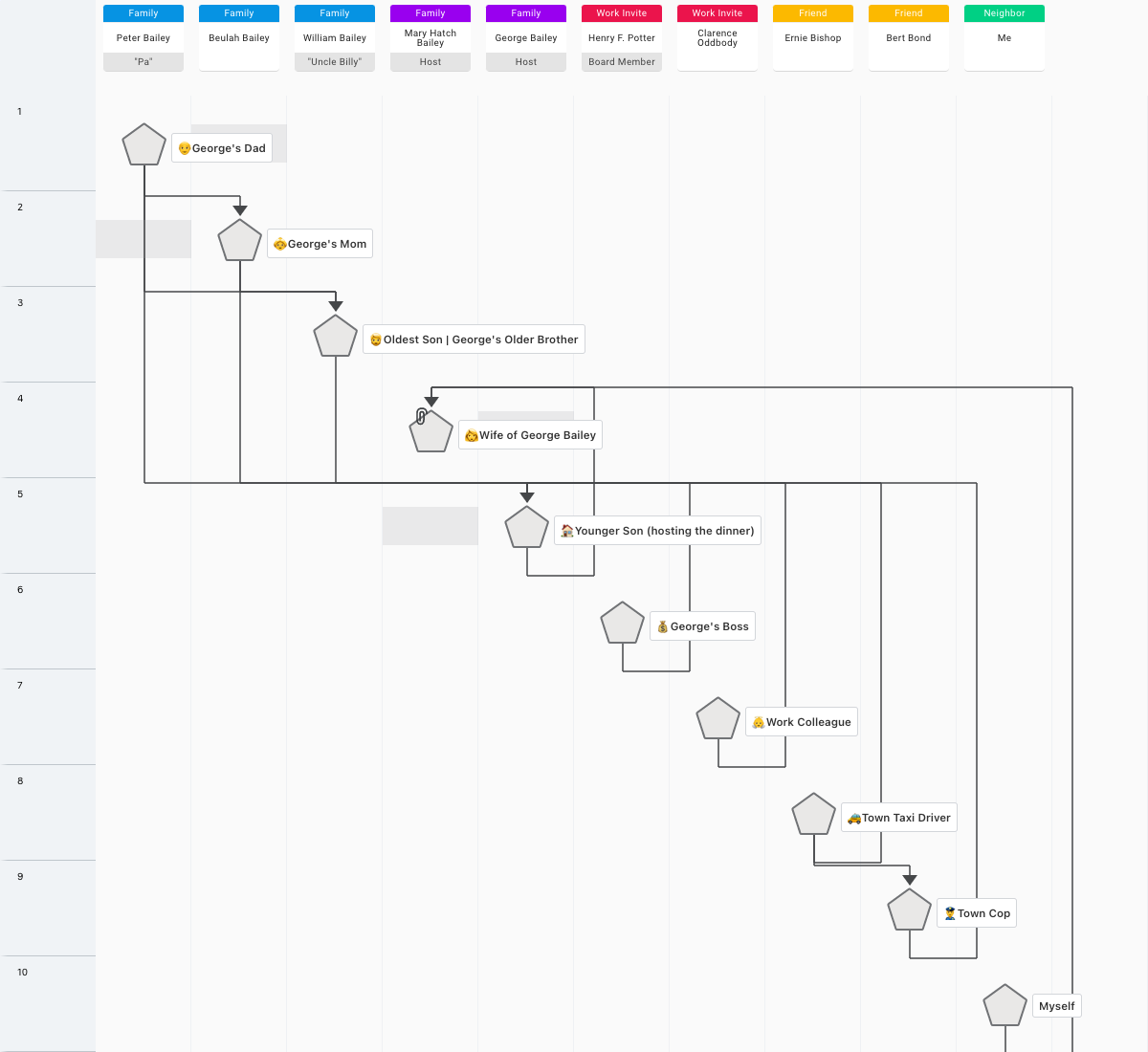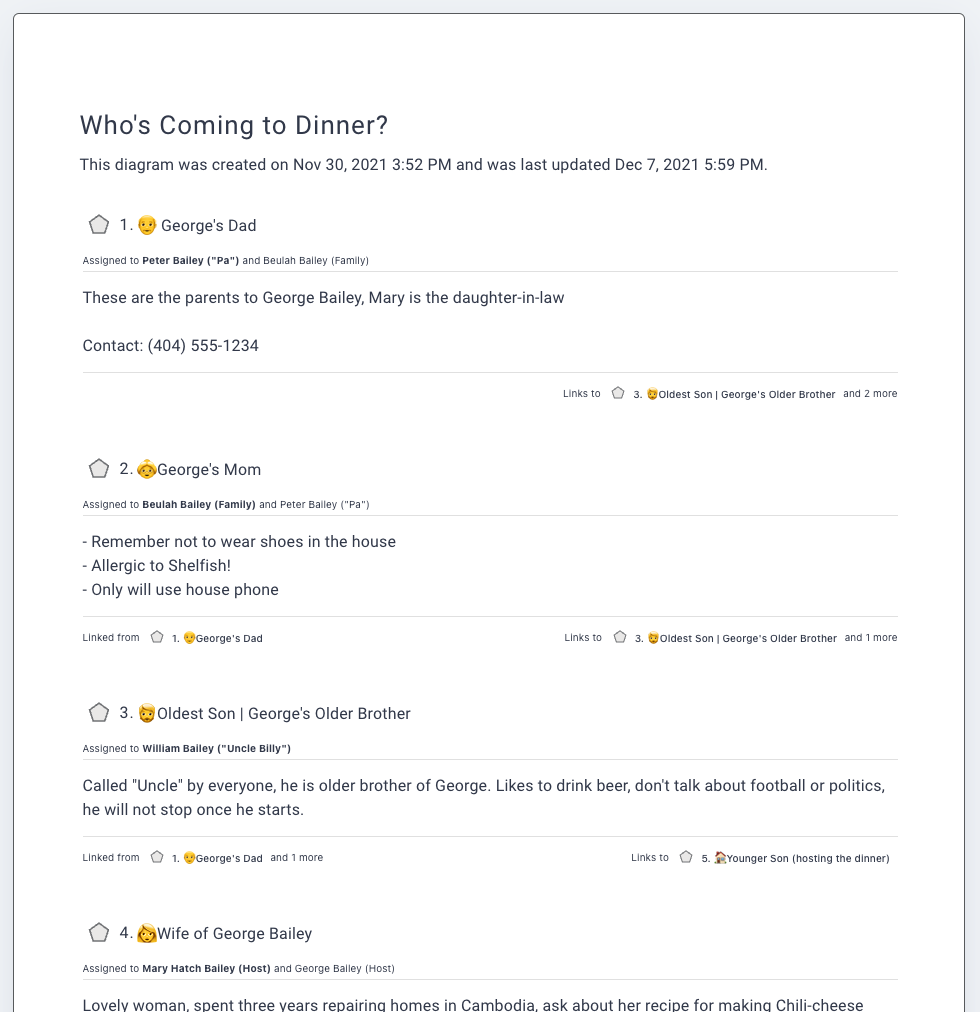Who's Coming to Dinner?
Dec 6, 2021 | By Terry Alortott

Holidays can be confusing with many different events and family outings. One of the most common holiday celebrations is a large dinner amongst friends, family, and sometimes our co-workers. Being part of that kind of dinner can be a bit intimidating if you are meeting some of the people for the first time and are looking to make a good impression.
There are a laundry list of ways to help remember who is who and what their relation to the host is. One of them being an actual laundry list. Others might use their phone to take some quick notes. Others might resort to flashcards. Sometimes you just wing it. All viable candidates, if not a little unorganized and may cause some holiday anxiety.
We’re going to take a look at a non-traditional diagram. In the sense that we’re going to be mapping out personal relationships and not the usual process flow.
The following group is fictional, taken from Frank Capra’s 1946 film It’s a Wonderful Life. However, the situation still holds true for many get-togethers that we experience in real life over the course of the holidays.

In this TeamFlow Diagram we have everyone’s name in the middle of the swimlanes. Along with how they are in relation to the hosts (arrows show relationships and the shadow boxes show marriage). With the clever use of labels and swimlanes we’re able to get a good some good data out of this, at a simple glance we can see:
Who is coming
Their relation to the “host”
How many people
Color coded social circle
And this is just the start. Adding in some details inside the nodes we can start to get a better idea of who the people coming are. Even some useful tidbits like personalities and even topics or types of food to avoid with them.
The diagram mode gives us almost a kind of “social tree”. But to get a deeper look we only need to switch to another mode, such as “Document”.

Here we can see the details of each person coming to the dinner. We can see some contact information along with some food allergies along with some helpful conversation notes. All great information to have before going into a big dinner.
Back to the “Diagram Mode”. Here we can look at the rest of the people coming to the event. These include yourself along with some co-workers and friends of the Bailey family.
(Click to drag the diagram to view all of the people coming to the dinner.)
This diagram shows us that even a “non-traditional” diagram made in TeamFlow can still present very clear information. Yet, where TeamFlow exceeds the most is the speed in which you can jump in and start formulating your ideas in a clear and concise manner. While we made this from the point of view of someone new coming into a larger group, this method would still work for the host to map people’s food preferences, sitting arrangements, who is coming to thanksgiving, graduation, or even just a fun dinner party night.
The possibilities really open up when using diagrams to map out specific data. But even something as fluid or unwieldy as a holiday dinner can be tamed a bit more than usual. Now, you can be as detailed or broad as you like, whatever your diagram needs to be, it’s possible.
If you have any suggestions or feedback on this article, please drop us a line. As always, thank you for reading and we hope you check back soon for more helpful guides on compliance and other industry topics. To get notifications on when we post our next article, please follow us on Twitter and LinkedIn.
 Who's Coming to Dinner?
Who's Coming to Dinner?